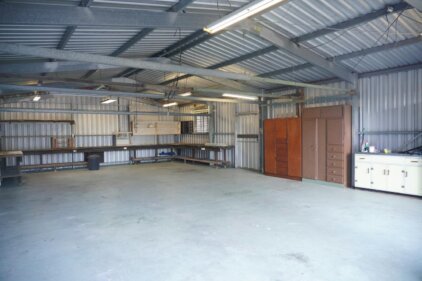Elements of a productive workspace design
To create a productive workspace design, there are several key elements to consider. First and foremost is the layout of the space. An efficient layout ensures that everything you need is within reach, minimizing the time wasted on searching for tools or documents. Consider the flow of your work and arrange your desk, storage, and other work-related areas accordingly.
Another crucial element is choosing the right furniture and equipment. Your desk and chair should be comfortable and ergonomic to prevent any discomfort or strain on your body. Invest in high-quality equipment that enhances your efficiency and allows for seamless workflow. Additionally, consider incorporating storage solutions to keep your workspace organized and clutter-free.
Creating a functional layout
When designing a workspace layout, it is essential to consider the flow of your work. Start by identifying the tasks you perform regularly and how they relate to each other. Arrange your desk and other work areas in a way that minimizes unnecessary movements and maximizes efficiency. Place frequently used tools and supplies within easy reach to avoid wasting time searching for them.
Consider creating distinct zones within your workspace. For example, have a designated area for computer work, a separate space for brainstorming or creative activities, and an organized storage area for files and supplies. This division of space helps create a sense of order and facilitates a smooth transition between different tasks.
Furthermore, pay attention to the positioning of your desk and chair. Ensure that you have enough space to move comfortably and that the positioning allows for good posture. A well-organized and functional layout is the foundation of a productive workspace.
Choosing the right furniture and equipment
Investing in the right furniture and equipment is crucial for creating a productive and comfortable workspace. Start with a desk that suits your needs and provides ample surface area for your work. Consider factors such as height adjustability, storage options, and cable management features. A well-designed desk can enhance your efficiency and contribute to a clutter-free workspace.
Equally important is selecting an ergonomic chair that supports good posture and provides comfort throughout the day. Look for chairs with adjustable height, lumbar support, and armrests. Spending long hours sitting in an uncomfortable chair can lead to various health issues, so it’s worth investing in a chair that prioritizes your well-being.
In addition to the desk and chair, consider other equipment that can enhance your productivity. This may include a dual monitor setup, a reliable printer, or a comfortable keyboard and mouse. Choose equipment that aligns with your work requirements and preferences. Investing in high-quality furniture and equipment is an investment in your productivity and overall well-being.
Incorporating natural light and greenery
One of the most effective ways to create an inspiring workspace design is to incorporate natural light and greenery. Natural light has been proven to boost mood, increase productivity, and improve overall well-being. Arrange your desk or workspace near a window to take advantage of natural light. If that is not possible, consider using daylight-mimicking bulbs or light fixtures that provide a soft, warm glow.
In addition to natural light, bringing greenery into your workspace can have a positive impact on your mood and creativity. Plants not only add a touch of nature but also help purify the air and reduce stress. Choose low-maintenance plants that thrive indoors and place them strategically around your workspace. The presence of greenery can create a calming and refreshing atmosphere, enhancing your overall work experience.
Colors and aesthetics for an inspiring workspace
The colors and aesthetics of your workspace can greatly influence your mood and creativity. When choosing colors, opt for a palette that promotes focus and productivity. Neutral tones like white, beige, or light gray provide a clean and calm background, allowing you to concentrate on your work. You can add pops of color through accessories or artwork to inject energy and inspiration into the space.
Consider the overall aesthetics of your workspace as well. Choose a style that resonates with your personality and work preferences. Whether you prefer a minimalist, modern, or cozy atmosphere, ensure that the design reflects your taste and inspires you to do your best work.
Personalization and organization tips
Personalizing your workspace can make it feel more welcoming and inspiring. Display photographs, artwork, or motivational quotes that resonate with you. Surrounding yourself with meaningful objects can serve as a reminder of your goals and aspirations, keeping you motivated even during challenging times.
Organization is another key aspect of a productive workspace. Establish a system to keep your workspace clutter-free and well-organized. Use storage solutions such as shelves, drawers, or filing cabinets to store documents, supplies, and other items. A clean and organized workspace can help you stay focused and reduce distractions.
Technology and connectivity in the workspace
In today’s digital age, technology plays a vital role in the workspace. Ensure that you have the necessary tools and connectivity to perform your work efficiently. Invest in a reliable computer or laptop, high-speed internet connection, and any software or applications that are essential for your tasks.
Consider organizing your cables and cords to maintain a neat and tidy workspace. Cable management solutions such as cable clips or cable sleeves can help keep your workspace free from tangled wires. A clutter-free workspace not only looks more appealing but also reduces the risk of accidents or damage to your equipment.
Ergonomics and employee well-being
Creating a workspace that prioritizes ergonomics is essential for the well-being of both yourself and your employees. Ergonomics refers to designing the workspace and equipment to fit the individual’s needs and reduce the risk of musculoskeletal disorders.
Provide adjustable chairs and desks that can be customized to each person’s preferences. Encourage employees to take regular breaks and incorporate stretching exercises into their routine. Consider offering ergonomic accessories such as wrist rests, footrests, or monitor stands to promote proper posture and reduce the strain on the body.
By prioritizing ergonomics and employee well-being, you can create a workspace that fosters productivity, reduces the risk of injuries, and promotes a positive work environment.
Case studies of successful workspace designs
To gain inspiration and a deeper understanding of effective workspace designs, let’s explore some case studies of successful companies. These companies have created workspaces that align with their values, enhance productivity, and promote employee well-being.
Company A, a tech startup, has designed their workspace with an open floor plan, encouraging collaboration and creativity. They have incorporated comfortable seating areas, standing desks, and colorful artwork to create an energetic and inspiring atmosphere. The layout of the space facilitates communication and teamwork, leading to innovative solutions and a vibrant work culture.
Company B, a design agency, has focused on creating a visually appealing workspace that reflects their creativity and attention to detail. They have used bold colors, unique furniture pieces, and artistic installations to create an inspiring environment. The workspace is organized into different zones based on the type of work, allowing employees to choose the area that best suits their needs and preferences.
Implementing workspace design on a budget
Creating a productive and inspiring workspace does not have to break the bank. Even with a limited budget, there are several strategies you can employ to design a workspace that enhances productivity and creativity.
Start by decluttering and organizing your current workspace. Remove any unnecessary items and create a streamlined work area. Consider repurposing existing furniture or exploring second-hand options to save on costs. Look for budget-friendly storage solutions such as shelves or organizers to keep your workspace tidy.
When it comes to aesthetics, focus on small changes that can make a big impact. Paint an accent wall in a vibrant color or add inexpensive artwork or plants to liven up the space. Incorporate natural light by rearranging your desk or using affordable lighting options.
Remember, creating a productive workspace is not solely dependent on the budget but on thoughtful planning and design choices.
Maintaining and evolving your workspace design
Creating a productive and inspiring workspace is an ongoing process. Once you have established your initial design, it is essential to maintain and evolve it over time. Regularly reassess your workspace to identify any areas that can be improved or updated.
Encourage feedback from employees or colleagues to gain insights and suggestions for enhancing the workspace. Consider conducting surveys or holding discussions to gather opinions on the design, layout, and overall functionality of the workspace. This feedback can help you make informed decisions and implement changes that benefit everyone.
As your work requirements or team dynamics evolve, be open to adapting your workspace design accordingly. Flexibility is key in creating a workspace that continues to meet the needs of individuals and promotes productivity and inspiration.
Conclusion
Designing a productive and inspiring workspace is a multifaceted endeavor that involves careful consideration of various elements. From the layout and furniture to the colors and aesthetics, every aspect contributes to creating an environment that enhances productivity and creativity.
By incorporating natural light and greenery, personalizing your workspace, and prioritizing ergonomics and employee well-being, you can create a workspace that not only boosts productivity but also promotes a positive work environment.
Remember that designing a workspace is not a one-time task but an ongoing process. Regularly reassess and evolve your design to ensure that it continues to meet the needs of individuals and align with your goals and aspirations.
Investing time and effort into creating a productive and inspiring workspace is a worthwhile endeavor that can have a significant impact on your work and overall well-being. So, take the first step today and start designing a workspace that inspires you to do your best work.





